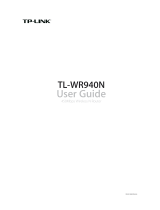
16
Appendix: Troubleshooting
T1. What can I do if I cannot access the Internet?
1. Make sure that all cables are properly and securely connected to the modem.
2. Contact your ISP to ensure your modem is properly activated. If it isn’t, your ISP will
activate it for you.
3. Make sure that your computer is set to obtain an IP address automatically.
4. Power cycle the modem by unplugging the power adapter from the electrical outlet
and plugging it back in.
5. Reset the modem. Please refer to T4 for instructions.
6. Contact our Technical Support if the problem persists.
T2. What can I do if the login page of the modem’s web interface does
not appear?
1. Check if the computer is set to a static IP address. If so, change the setting to obtain
an IP address automatically.
2. Make sure http://192.168.100.1 is correctly entered in the web browser.
3. Use another web browser.
4. Unplug and reconnect both ends of the Ethernet cable.
T3. How can I reset the password to the modem’s web interface?
If you have forgotten your password, refer to T4 to reset the modem. This will reset
the password back to admin.
T4. How can I restore the modem to its factory default settings?
With the modem powered on, press and hold the Reset button on the back panel
until all LEDs turn on momentarily, then release the button.
T5. How can I change my computer‘s setting to obtain an IP address
automatically?
To change the computer’s network settings, follow the steps below.
• For MAC OS X:
1 ) Click the Apple icon, and select System Preferences from the drop-down list.
2 ) Click the Network icon.
3 ) Select Ethernet (for wired connection) or Wi-Fi (for wireless connection) in the
left panel, then click Advanced.
4 ) Click TCP/IP.




















